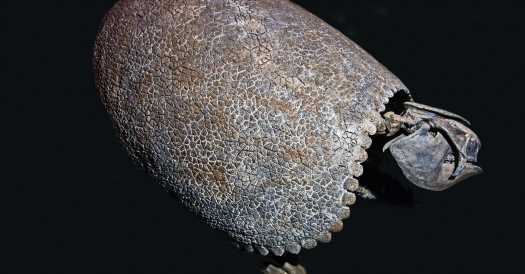Millions of years before humans set foot in the Americas, a rush of alien animals began arriving in South America.
As the Isthmus of Panama came up from the waves, bridging the North and South American continents, llamas, raccoons, wolves, bears and many other species headed south. At the same time, the ancestors of armadillos, possums and porcupines headed north.
Paleontologists call the event the Great American Interchange. But they’ve long been puzzled by one aspect of it: Why did the majority of mammal immigrants go south, rather than the other way around? What happened to the southern mammals?
After a detailed analysis of fossil data from both continents, a group of researchers think they have an answer: a nasty extinction event struck South American mammals during the interchange, leaving fewer of them available to head north. Their research was published Monday in the Proceedings of the National Academy of Sciences.
After the extinction of the dinosaurs and gradual recovery of Earth’s biosphere, there were millions of years of animal exchanges between North America and Asia. During this time frame, the ancestors of modern horses, camels and cats crossed back and forth over land bridges. But South America spent most of this time period, the Cenozoic, as an island continent, complete with its own strange bestiary: giant ground sloths, bizarre native ungulates, tank-like armadillo relatives and saber-toothed marsupial predators.
Then 10 million years ago, a series of tectonic events gave rise to the Isthmus of Panama, linking two very different faunas.
“This exchange at the beginning was relatively balanced,” said Juan Carrillo, a fellow at the Smithsonian Tropical Research Institute in Panama and an author of the study. “There were the same amount of mammals that migrated in both directions. But what we found was that five million years ago in the Pliocene, there was a disproportionate decline in diversity.”
The source of that extinction event remains unclear, Dr. Carrillo said. The climate grew dryer in the Pliocene, pushing back South American forests and beginning a cycle of global cooling that eventually led to the ice ages. As habitats changed, South American ecosystems were probably subjected to considerable stress.
Competition from northern species probably played a part as well, with northern predators such as dogs, bears and saber-toothed cats benefiting from comparatively bigger brains and more efficient teeth. Some of those southward migrants might have brought parasites and diseases with them, too.
“Probably the reason for the extinctions is quite complex, and includes some biological interactions and habitat change,” Dr. Carrillo said.
Whatever the causes of the extinction event, it seems that by the Pleistocene ice ages, when humans started to show up, North American species made up the better part of the interchange simply because fewer South American mammals were left to head north.
Even so, some South American species were remarkably successful: giant ground sloths made it all the way to Alaska, and terror birds had a last gasp in Florida. But only a few, such as possums and armadillos, survived the Pleistocene extinction.
While the American Interchange took millions of years, Dr. Carrillo said, the advent of industrial humanity has seen exotic species race around the globe, no land bridge required. Indian antelope graze on Texan ranches. Eurasian feral pigs run rampant across North America. African hippos have even found a foothold in Colombia with the help of Pablo Escobar’s drug empire.
The team’s research into the Great American Interchange suggests that however such exotic species arrive in a new environment, these kinds of introductions can lead to unpredictable changes in the shape of ecological communities.
“This movement of animals that humans do today might have some important long term consequences,” Dr. Carrillo said.
Source: Read Full Article
